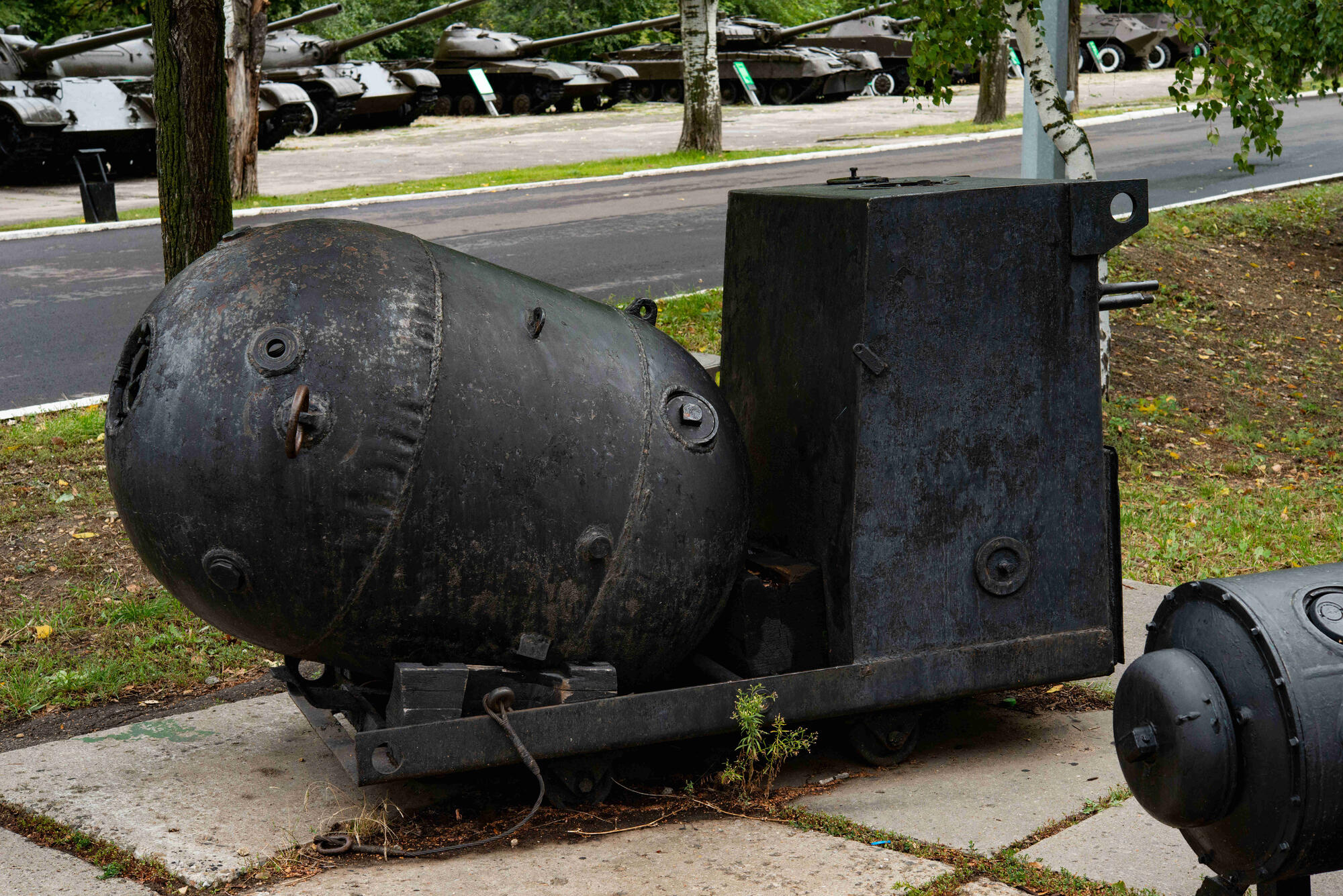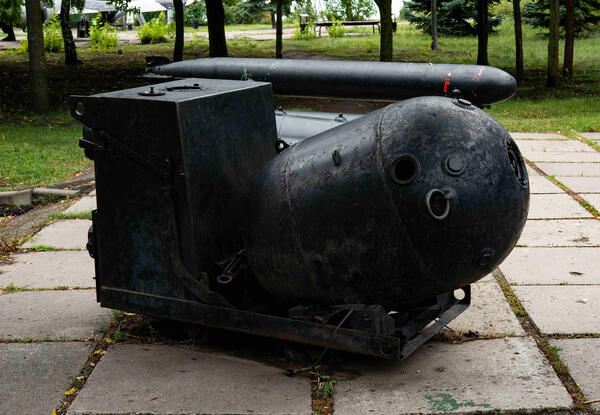The KB shipboard moored mine entered service with the Soviet Navy in 1931. It was a contact electrochemical mine. The KB was designed to sink surface ships and surfaced submarines.
The KB mine could be laid from ships of all classes that were equipped with mine rails and sponsons (projections that extend outward to act as a securing point for mines). By the beginning of the Great Patriotic War, the fleet had 7945 mines of this type in service.
During the war, 1184 mines of these types were lost. The KB was successfully used in large minefields. This mine featured safety iron caps that protected the mine’s electrical elements called Hertz horns.
The safety caps were fixed on the body with safety pins and special steel lanyards with a sugar safety device. Before installing the mine, the pins were removed and the safety cap was held only by the lanyard.
After laying the mine, the sugar melted, the lanyard unwrapped and the stopper opened, the safety cap was released and ejected with the help of a spring device, after which the mine was ready to detonate.
Since 1941, a submersion valve was used in the KB mines. This feature was added to guarantee that the mine would sink if it got detached from the anchor. Thus, it ensured the safety of the domestic forces that were in the vicinity of defensive minefields.
A year prior, the professor of the Naval Academy Vladimir Nikolaevich Tyulin had developed a two-channel acoustic non-contact detonator. Based on his design, the Krab detonator, which was designed to detonate in response to ship noise, was manufactured for the KB moored mine in 1942.
The reaction zone of such a detonator was shaped like a cone: its vertex was in the horn of the receiving and amplifying unit, while its circular base formed a “danger area” on the surface of the water. When a ship passed through it, the mine triggered the detonator. The KB mine with the “Krab” non-contact acoustic detonator was used as a prototype for the GM (1956) and UGM (1960) mines.
The KB mine could be laid from ships of all classes that were equipped with mine rails and sponsons (projections that extend outward to act as a securing point for mines). By the beginning of the Great Patriotic War, the fleet had 7945 mines of this type in service.
During the war, 1184 mines of these types were lost. The KB was successfully used in large minefields. This mine featured safety iron caps that protected the mine’s electrical elements called Hertz horns.
The safety caps were fixed on the body with safety pins and special steel lanyards with a sugar safety device. Before installing the mine, the pins were removed and the safety cap was held only by the lanyard.
After laying the mine, the sugar melted, the lanyard unwrapped and the stopper opened, the safety cap was released and ejected with the help of a spring device, after which the mine was ready to detonate.
Since 1941, a submersion valve was used in the KB mines. This feature was added to guarantee that the mine would sink if it got detached from the anchor. Thus, it ensured the safety of the domestic forces that were in the vicinity of defensive minefields.
A year prior, the professor of the Naval Academy Vladimir Nikolaevich Tyulin had developed a two-channel acoustic non-contact detonator. Based on his design, the Krab detonator, which was designed to detonate in response to ship noise, was manufactured for the KB moored mine in 1942.
The reaction zone of such a detonator was shaped like a cone: its vertex was in the horn of the receiving and amplifying unit, while its circular base formed a “danger area” on the surface of the water. When a ship passed through it, the mine triggered the detonator. The KB mine with the “Krab” non-contact acoustic detonator was used as a prototype for the GM (1956) and UGM (1960) mines.



